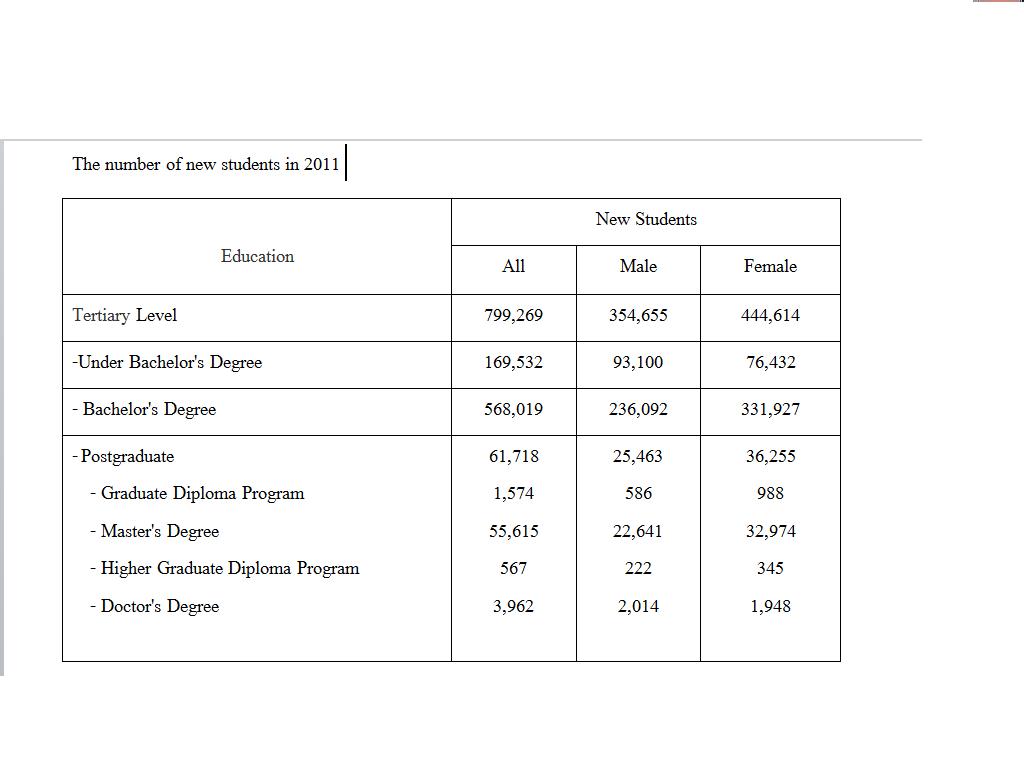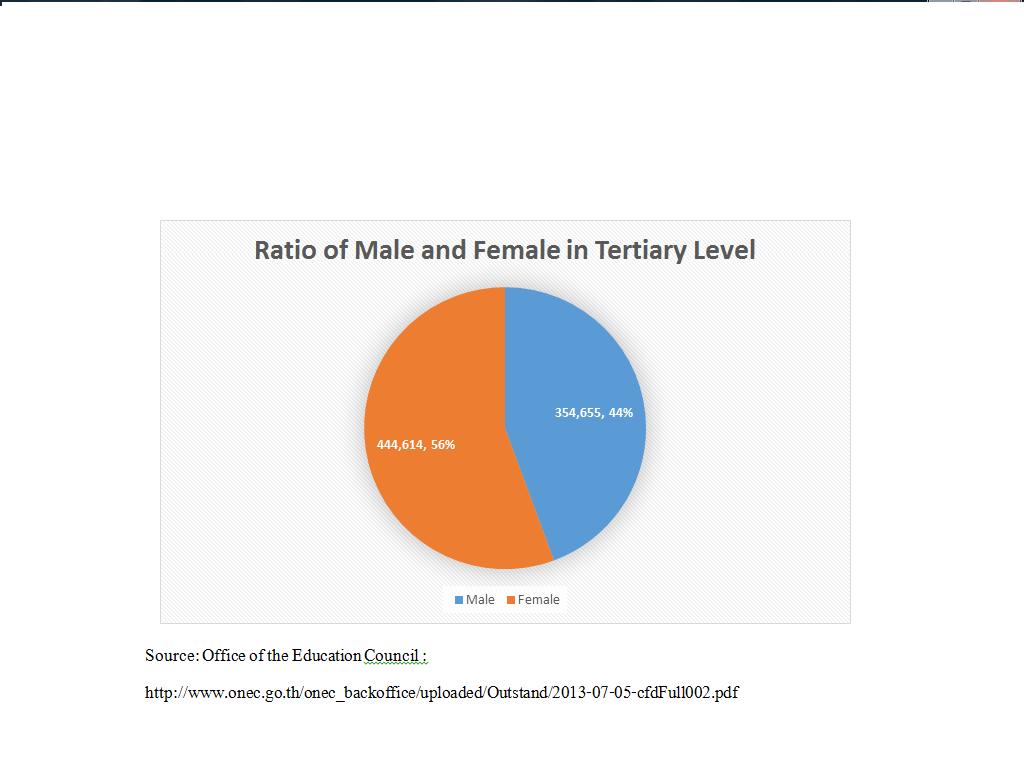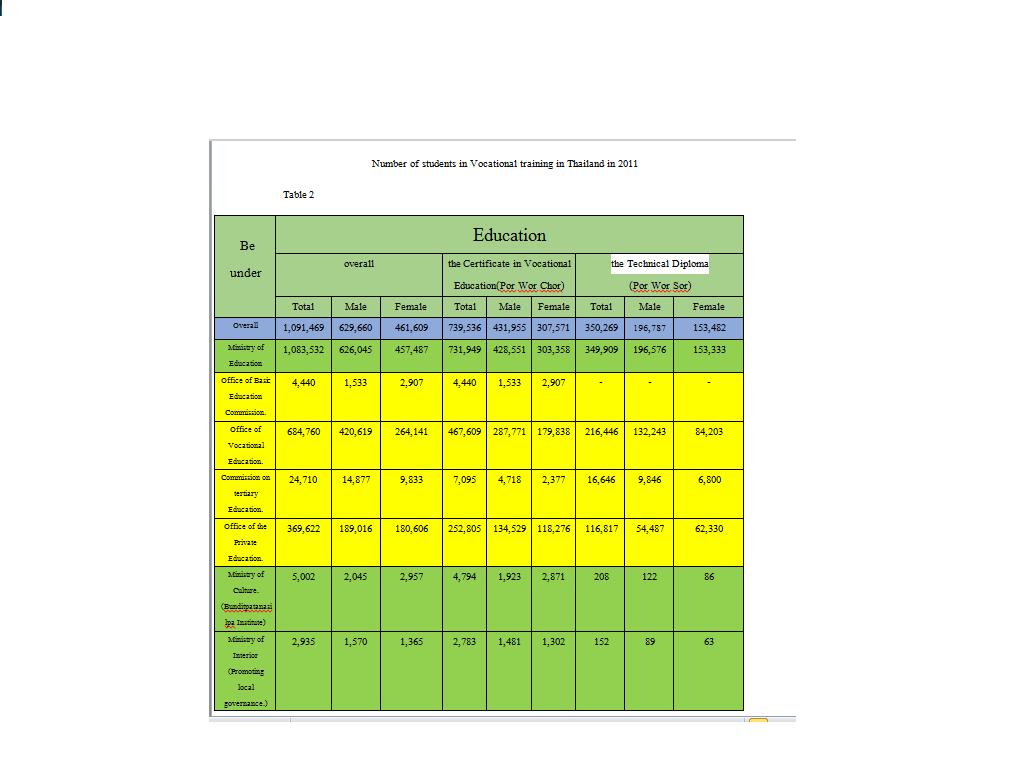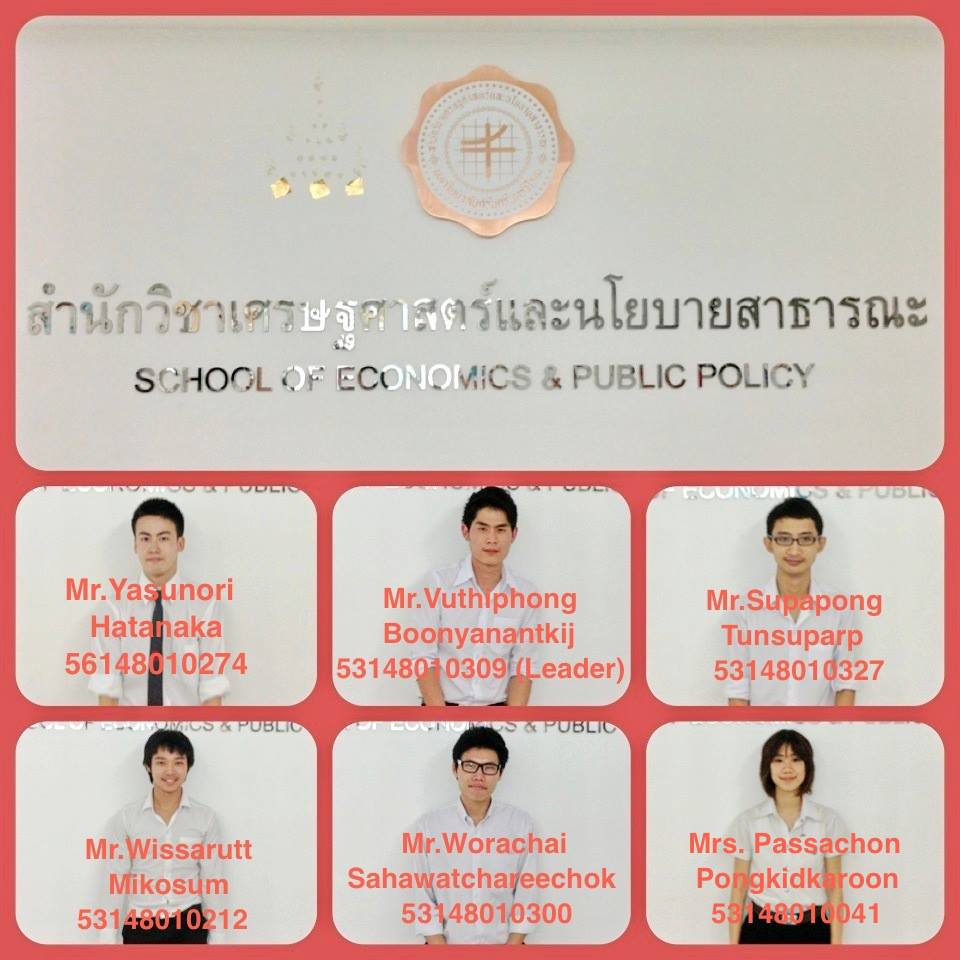Girls’ tertiary education and vocational training in Thailand
Girls’ tertiary education
Tertiary education in Thailand is better defined as post-high school education. It is provided in three forms: “Under” bachelor’s degree, bachelor’s degree and postgraduate degree. “Under” bachelor’s degree qualifications there could be a diploma, a vocational diploma, a diploma in Thai dance, or an art diploma. A bachelor’s degree includes a higher diploma in teaching. A postgraduate degree consists of graduate diploma programs, master’s degrees, higher graduate diploma programmes and doctorate degrees.

 http://www.onec.go.th/onec_backoffice…/2013-07-05-cfdFull002.pdf/.
http://www.onec.go.th/onec_backoffice…/2013-07-05-cfdFull002.pdf/.
In Thailand, there is only a small gap in tertiary education between men and women. The ratio of women to men including all students in tertiary education such as bachelor’s degrees, higher graduate diploma programmes and doctor’s degrees is very close. Moreover, we found that the number of women is higher than that of men at many education levels.
Vocational training in Thailand
The vocational training in Thailand is provided in three forms: the normal programme, the dual-vocational training programme and non-formal programme. There are three levels of vocational education offered: A Certificate in Vocational Education (Por Wor Chor) which is completed during the upper secondary period; the Technical Diploma (Por Wor Sor), completed after the Vocational Education Certificate and the Higher Diploma upon completion of which admission to university for a Bachelor degree programme may be granted. As of 2010, vocational training statistics provided by the Ministry of Education show that there are 415 public colleges and 427 private vocational schools and colleges around the country. http://http://www.unescobkk.org/education/resources/education-system-profiles/thailand/references//.
 Source: http://www.onec.go.th/onec_backoffice/uploaded/Outstand/2013-07-05-cfdFull002.pdf/
Source: http://www.onec.go.th/onec_backoffice/uploaded/Outstand/2013-07-05-cfdFull002.pdf/
From the data in table 2, we can see that the number of young women in vocational training in Thailand is smaller than the number of young men in each category of vocational training. In total in this type of training there are around 150,000 students. There is a small gap between young men and women in the vocational training because the population of women in Thailand is greater than the population of men, which is around 2 million. Thus the number of women should be greater than men in education. http://www.dailynews.co.th/thailand/21483/….
The vocational education provision should try to be in line with the National Economic and Social Development Plan as well as the National Education Plan (2002-2016) in order to produce and develop vocational manpower at levels of technical and technological skills that can serve the demands of the labour market. So far, however, it appears that vocational training in Thailand has not been able to provide sufficient highly-qualified and well-trained technicians for a rapidly changing economy. The qualifications of manpower that are lacking include: communication skills, computer and ICT skills, management, calculation skills, problem solving skills, team working skills, responsibility, honesty, tolerance, discipline, punctuality and leadership.
Conclusion
Tertiary education and vocational training in Thailand have different trends concerning men and women. In tertiary education there are more women than men which is in contrast with vocational training where there are more men than women. However, the gap between men and women in both tertiary education and vocational training is very small and young men and women in Thailand have almost equal representation in education.
References



